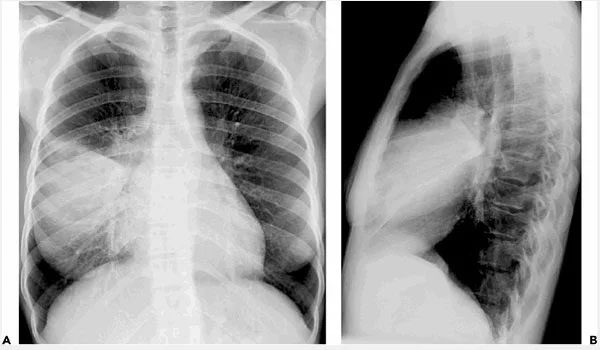Mycoplasma bacteria typically cause mild respiratory infections but can also lead to serious pneumonia.
What is Mycoplasma Pneumonia?
Mycoplasma bacteria spread through contact with respiratory droplets in crowded areas such as schools, hospitals, and amusement parks. While Mycoplasma infections are common, only about 10% of those infected will actually develop pneumonia.
1. Symptoms of Mycoplasma Pneumonia
Most cases of Mycoplasma infection present with mild symptoms that can last for several weeks.
According to the CDC, symptoms typically take between 1 to 4 weeks to appear. Initial typical symptoms include:
- Sore throat
- Fatigue
- Fever
- Cough
- Headache
The symptoms of Mycoplasma infection are similar to those of other respiratory infections, making diagnosis and treatment confusing and potentially leading to complications.

The initial symptoms of Mycoplasma infection are quite similar to those of other respiratory infections. (Image: Internet).
When Mycoplasma bacteria infect the lungs, more severe symptoms may occur:
- Shortness of breath
- Rapid, shallow breathing
- Wheezing
- Chest pain
- Increased heart rate
- Sweating and shivering
- Loss of appetite
Additionally, individuals with asthma may find that a Mycoplasma infection exacerbates their symptoms.
2. Causes and Transmission of Mycoplasma Bacteria
Mycoplasma is a type of bacteria that can cause illness by damaging the mucous membranes of the respiratory system (throat, lungs, trachea).
Regarding transmission, when someone infected with Mycoplasma coughs or sneezes, they release small respiratory droplets containing the bacteria. Healthy individuals can become infected if they inhale these droplets.
However, most people who come into contact with someone with Mycoplasma pneumonia for a short time do not get infected.

People can become infected by inhaling small respiratory droplets containing the bacteria. (Image: Internet).
3. Complications of Mycoplasma Pneumonia
In some cases, Mycoplasma infections can become dangerous. If you have asthma, Mycoplasma bacteria can worsen your symptoms. Mycoplasma can also develop into a more severe case of pneumonia.
However, long-term Mycoplasma pneumonia is very rare, but some studies suggest that this bacteria could be a contributing factor to chronic lung disease. In a few cases, untreated Mycoplasma pneumonia can lead to death.
Potential complications when infected with Mycoplasma pneumonia include:
- Respiratory failure
- Lung abscess
- Acute respiratory distress syndrome
- Lung consolidation
- Obstructive bronchiolitis
You should seek medical attention immediately if you experience any symptoms, especially if they last longer than 2 weeks.

Mycoplasma pneumonia can lead to various complications, such as lung consolidation. (Image: Internet)
4. Risk Factors for Mycoplasma Pneumonia
Individuals at high risk for Mycoplasma pneumonia include:
- Older adults
- People with conditions that weaken their immune system, such as HIV or those using chronic steroids, immunotherapy, or chemotherapy
- Individuals with lung disease
- People with sickle cell disease
- Children under 5 years old
5. How is Mycoplasma Pneumonia Diagnosed?
Mycoplasma pneumonia often develops without notable symptoms in the first 1 to 3 weeks after exposure. Early diagnosis is challenging because the body does not immediately show signs of infection.
Infection may manifest outside of your lungs. If this occurs, signs of infection may include hemolysis, skin rashes, and joint damage.
To diagnose, your doctor uses a stethoscope to listen for any abnormal sounds in your breathing. Chest X-rays and CT scans can also assist the doctor in making a diagnosis.

To diagnose Mycoplasma pneumonia, the doctor may listen to your breath, conduct chest X-rays, and perform CT scans. (Image: Internet)
6. Treatment for Mycoplasma Pneumonia
Antibiotic therapy is always used to treat pneumonia. Doctors may prescribe several types of medications such as doxycycline, tetracycline, quinolone (such as levofloxacin and moxifloxacin), and corticosteroids. For children, different antibiotics may be needed, such as erythromycin, clarithromycin, roxithromycin, or azithromycin.
In some cases, antibiotics alone may not be sufficient; patients may need treatment with corticosteroids to control inflammation.
If you have severe Mycoplasma pneumonia, you may require “immunomodulatory therapy” in addition to corticosteroids, including intravenous immunoglobulin (IVIG).
However, each patient has different health conditions. Therefore, to ensure appropriate and effective treatment, everyone should follow their doctor’s instructions.
7. Preventing Mycoplasma Pneumonia
Currently, there is no vaccine to prevent Mycoplasma pneumonia, but several measures can help protect yourself and reduce the risk of infection:
- Wear a mask when going out, especially in crowded areas.
- Wash your hands frequently with soap and water for at least 20 seconds.
- Boost your immune system with a balanced diet and a healthy lifestyle.
- Avoid contact with individuals exhibiting symptoms of Mycoplasma pneumonia.
- Stay up-to-date with vaccinations for pneumococcus, seasonal flu, etc.
If you exhibit symptoms of the disease, to prevent spreading it to others, you should:
- Cover your mouth and nose with a tissue when coughing or sneezing. If you don’t have a tissue, cough or sneeze into your upper sleeve or elbow.
- Dispose of used tissues in the trash.
- Limit contact with others.
Fruits and Vegetables Good for Pneumonia Patients
Pneumonia Caused by Pneumococcus – A Dangerous Disease in Children


















































